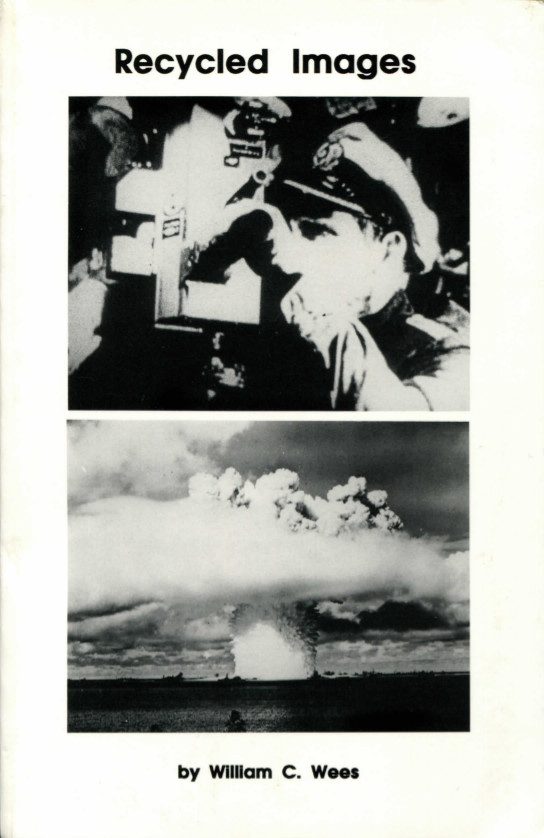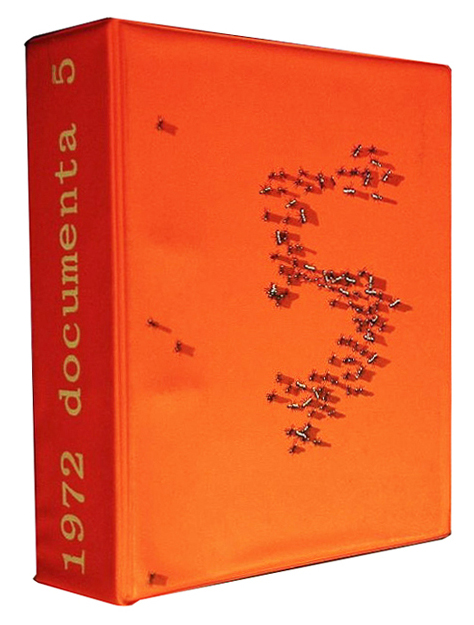William C. Wees: Recycled Images: The Art and Politics of Found Footage Films (1993)
Filed under book | Tags: · appropriation, cinema, collage, experimental film, film, film theory, montage, politics

An important film-theoretical work, especially significant for its attempt to delimit the phenomenon of found footage film.
Includes condensed commentary from author’s 1991 informal interviews with North American filmmakers who have made extensive use of found footage: Craig Baldwin, Abigail Child, Bruce Conner, David Rimmer, Keith Sanborn, Chick Strand, and Leslie Thornton.
Published in conjuction with the Anthology Film Archives’ May 1993 survey of found footage and collage films.
Publisher Anthology Film Archives, New York City, 1993
ISBN 0911689192, 9780911689198
117 pages
via Alex Costa
Commentary: Pierre Rannou (Esse, 2008).
PDF (32 MB)
Comment (0)Konstantin Akinsha: The Second Life of Soviet Photomontage, 1935-1980s (2012)
Filed under book | Tags: · art, art history, avant-garde, cinema, constructivism, film, ideology, montage, photography, photomontage, politics, propaganda, russia, socialist realism, soviet union
“This dissertation explores the development of Soviet photomontage from the second half of the 1930s to the end of the 1970s. Until now, the transformation of the modernist medium and its incorporation into the everyday practice of Soviet visual propaganda during and after the Second World War has not attracted much scholarly attention. The firm association of photomontage with the Russian avant-garde in general, and with Constructivism in particular, has led art historians to disregard the fact that the medium was practised in the USSR until the final days of the Soviet system. The conservative government organisations in control of propaganda preserved satirical photomontage in its post-Dadaist phase and Heartfield-like form, finding it useful in the production of negative propaganda.”
Doctor of Philosophy Dissertation
University of Edinburgh, 2012
328 pages + 368 pages of illustrations
PDF (29 MB)
Comment (0)Harald Szeemann, et al.: Documenta 5, catalogue (1972) [DE]
Filed under catalogue | Tags: · advertising, art, conceptual art, film, institutional critique, light art, museum, outsider art, performance art, politics, propaganda, realism, science fiction, systems art, utopia

“Even decades later, Documenta 5, the exhibition that was criticized in 1972 as being “bizarre.. vulgar.. sadistic” by Hilton Kramer (NYT) and “monstrous.. overtly deranged” by Barbara Rose (NYM), resonates today as one of the most important exhibitions in history. Both hailed and derided by artists and critics, the exhibition was the largest, most expensive and most diverse of any exhibition anywhere, and foreshadowed all large-scale, collaboratively curated, comprehensive mega-shows to come.
Chiefly curated by the Swiss curator, Harald Szeemann, it was a pioneering, radically different presentation that was conceived as a 100-day event, with performances and happenings, outsider art, even non-art, as well as repeated Joseph Beuys lectures, and an installation of Claes Oldenburg’s Mouse Museum, among many other atypical inclusions. The show widely promoted awareness of a contract known as The Artist’s Reserved Rights Transfer and Sale Agreement, which protects artists’ ongoing intellectual and financial rights with regard to their production.” (Source)
“Featuring the works of over 170 artists and an equally expansive variety of materials and subjects drawn from popular cultural materials such as science fiction publications, kitsch objects, exploitation films, as well as advertising imagery, in addition to the more anticipated painting and sculpture – Documenta 5 valiantly attempted to bridge the gap between art, culture, science and the broader society.
A lasting highlight of the exhibition was the graphic logo for the show designed by Edward Ruscha. Commissioned by Szeeman, Ruscha’s graphic image for the show featured ants arranged in the word ‘Docu / menta’ and the number ‘5.’ The emblem was used on the exhibition’s poster and catalogue cover.” (Source)
Contents of Part B:
1 Hans Heinz Holz: Kritische Theorie des ästhetischen Zeichens (catalogue foreword, 86 pp),
2 Bazon Brock & Karl Heinz Krings: Audiovisuelles Vorwort (audiovisual foreword, 19 pp),
3 Eberhard Roters: Trivialrealismus & Trivialemblematik (16 pp),
4 Ingolf Bauer: Bilderwelt und Froemmigkeit (10 pp),
5 Gesellschaftliche Ikonographie an zwei Beispielen (8 pp),
6 Charles Wilp, Hans Heinz Holz: Werbung (4 pp),
7 Reiner Diederich, Richard Grübling, Klaus Staeck: Politische Propaganda (14 pp),
8 Pierre Versins: Science Fiction/Heute von gestern gesehen (10 pp),
9 François Burkhardt: Utopie/Morgen von gestern gesehen (16 pp),
10 Ursula Barthelmess, Hans-Henning Borgelt, Linde Burkhardt, Wolfgang Hoebig: Spiel und Wirklichkeit (14 pp),
11 Theodor Spoerri: Bildnerei der Giesteskranken (18 pp),
12 Gerhard Buettenbender, Sigurd Hermes: Film (28 pp),
13 Museen von Künstlern (17 pp),
14 Sozialistischer Realismus (1 p),
15 Jean-Christophe Ammann: Realismus (58 pp),
16 Johannes Cladders, Harald Szeemann: Individuelle Mythologien – Selbstdarstellung: a) Performance, b) Film – Prozesse (220 pp),
17 Konrad Fischer, Klaus Honnef, Gisela Kaminski: Idee + Idee / Licht (92 pp),
18 Information + The Artist’s Reserved Rights Transfer and Sale Agreement (44 pp),
19 Verzeichnis der ausgestellten Werke
20 Allgemeine Bibliographie
21 Waehrend: Ereigniskalender
22 Nachher 1: Text
23 Nachher 2: Bild
24 Nachher 3: Presse
25 Fotonachweis
documenta 5. Befragung der Realität – Bildwelten heute
Edited by Harald Szeemann, Marlis Grüterich, Katia von den Velden, Jennifer Gough-Cooper
Publisher documenta and Bertelsmann, Kassel, 1972
ISBN 3570028569, 9783570028568
64+80 & 740+ pages
via The DOR (at Archive.org)
Analyses and commentaries:
3sat TV documentary (video, 41 min, 1972, DE)
Der Spiegel (1972, DE)
Klaus Herding & Hans-Ernst Mittig on Holz’s foreword (Kritische Berichte, 1973, DE)
Documenta 5 in Art Since 1900 (2004, EN)
Dirk Schwarze (Documenta Archiv, 2014, DE)
Maria Bremer (Stedelijk Studies, 2015, EN)
documenta Archiv, (2)
Wikipedia (DE)
WorldCat
Part A (144 pp, PDF, 57 MB)
Part B (740+ pp, PDF, 287 MB, sections 19-24 missing; updated on 2023-3-28)

